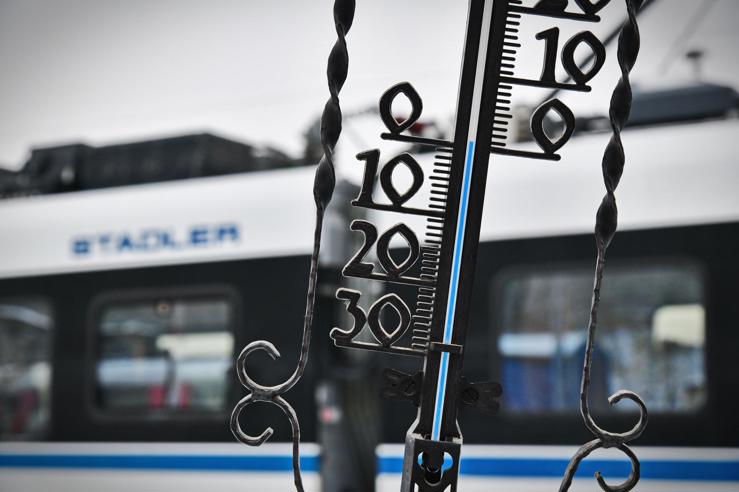The three-unit FLIRT Akku used for the record journey has been developed by Stadler since 2016 as a local CO2-neutral mobility solution for the climate-friendly operation of unelectrified railway routes.
The vehicle was approved by the German Federal Railway Office and introduced to the public for the first time in 2018. Since then, the FLIRT Akku test carrier has travelled around 15,000km in battery-only operation.
“We designed and calculated the vehicle for an operational range of 80km, depending on the route requirements of the respective network,” explained Evelyn Thiel, technical project leader for the FLIRT Akku at Stadler. “But on various journeys testing the technology, we were able to realize significantly greater ranges, so that we even dared to attempt the world record at wintry temperatures. The vehicle had already had to cope with various scenarios like making up for unplanned delays on the track or operating under extremely hot or cold weather conditions in the testing after all.”
 “We can confirm that the FLIRT Akku test carrier travelled exactly 224.00 kilometers in battery-only mode on the journey from Berlin-Gesundbrunnen to Warnemünde without charging its batteries from an overhead contact line or other external energy source,” added Heiko Hüserich of independent technical consultants TÜV Nord.
“We can confirm that the FLIRT Akku test carrier travelled exactly 224.00 kilometers in battery-only mode on the journey from Berlin-Gesundbrunnen to Warnemünde without charging its batteries from an overhead contact line or other external energy source,” added Heiko Hüserich of independent technical consultants TÜV Nord.
The first FLIRT (Fast Light Intercity and Regional Train) was developed in 2002 at the behest of the Swiss Federal Railways SBB for the Zug city railway. The four-unit series went into passenger use under the name of RABe 523 2004. Since then, the FLIRT has turned into an international bestseller with.
Today, more than 2,000 vehicles have been sold and are being operated in 20 countries in virtually all climate zones. Two- to six-unit train compositions are realizable in normal and broad-gauge designs for top speeds of 160 to 200 km/h. In doing so, the FLIRT can be customized to individual client requirements very flexibly in terms of its drive technology, number of seats, passenger flow and interior design. The lightweight aluminum design, maintenance-friendly construction and components that have been tried and tested a thousand times help to keep the operating, energy, and maintenance costs low. Besides electric, diesel or bi-modal drives, the FLIRT is also available with climate-friendly battery and hydrogen propulsion.
With the FLIRT Akku, Stadler has developed a battery-electric multiple unit that will run as both a classic EMU (electric multiple unit) under overhead contact cable or battery-operated on unelectrified routes. This makes it optimal for partly electrified routes that currently still need to be served with diesel trains.
Stadler had already won the first green technology tender in Germany and sold 55 FLIRT Akkus to NAH.SH, the Schleswig-Holstein Local Transport Association in 2019. In November 2021, another order for 44 vehicles followed from Deutsche Bahn Regio. In addition to which Stadler is also building the first hydrogen-powered FLIRT for the San Bernardino County Transportation Authority (SBCTA) in the USA.

